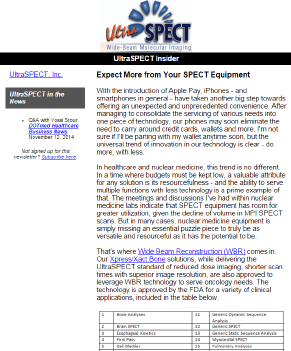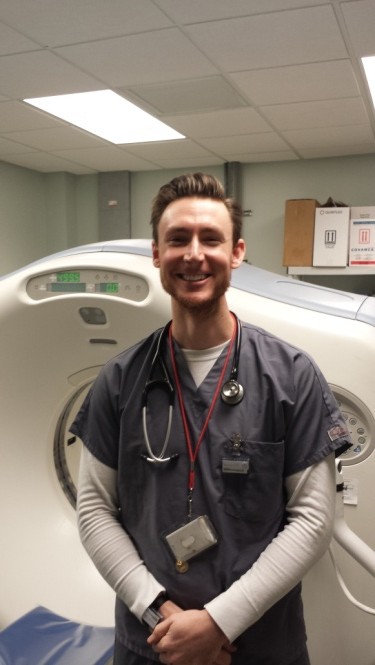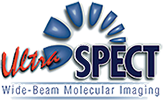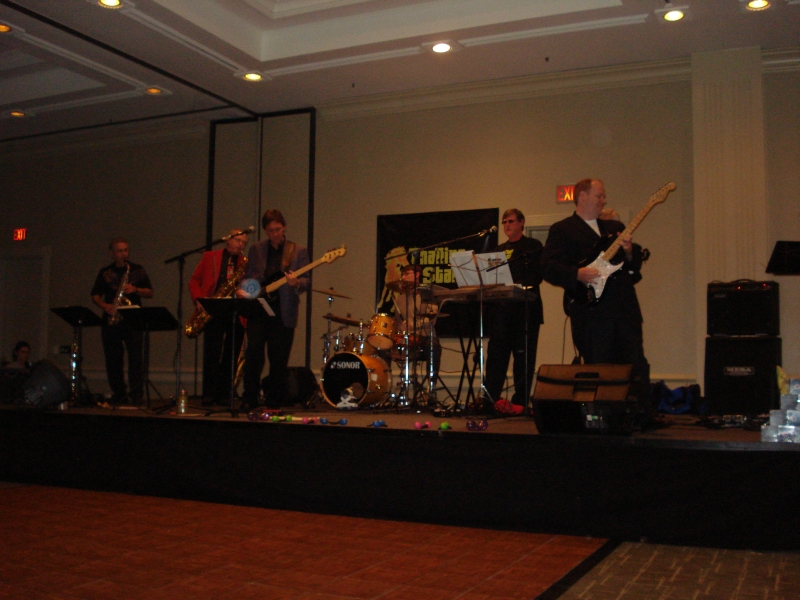 Expect More from Your SPECT Equipment
Expect More from Your SPECT Equipment
With the introduction of Apple Pay, iPhones – and smartphones in general – have taken another big step towards offering an unexpected and unprecedented convenience. After managing to consolidate the servicing of various needs into one piece of technology, our phones may soon eliminate the need to carry around credit cards, wallets and more. I’m not sure if I’ll be parting with my wallet anytime soon, but the universal trend of innovation in our technology is clear – do more, with less.
In healthcare and nuclear medicine, this trend is no different. In a time where budgets must be kept low, a valuable attribute for any solution is its resourcefulness – and the ability to serve multiple functions with less technology is a prime example of that. The meetings and discussions I’ve had within nuclear medicine labs indicate that SPECT equipment has room for greater utilization, given the decline of volume in MPI SPECT scans. But in many cases, nuclear medicine equipment is simply missing an essential puzzle piece to truly be as versatile and resourceful as it has the potential to be.
That’s where Wide Beam Reconstruction (WBRTM) comes in. Our Xpress/Xact.Bone solutions, while delivering the UltraSPECT standard of reduced dose imaging, shorter scan times with superior image resolution, are also approved to leverage WBRTM technology to serve oncology needs. The technology is approved by the FDA for a variety of clinical applications, included in the table below.
Xpress/Xact.Bone is additionally cleared for use with all mid/low energy tracers including, but not limited to: Tc99m, TI201, I123 MIBG and I131.
UltraSPECT has the technology to serve oncology needs through its compatibility with a robust variety of application and tracer combinations – enabling nuclear medicine departments to do more with their existing equipment. However, the benefits of this oncology product extend much further.
A study presented at the 2011 and 2012 European Association of Nuclear Medicine annual meeting concluded that wide beam reconstruction improved the resolution of SPECT studies utilizing Dimercaptosuccinic acid (DMSA) in children – especially beneficial when dealing with small kidneys for infants and small children and in regions of low and irregular DMSA uptake, such as dyplastic kidneys. Additional research over the last decade includes findings that the WBRTM technology can enhance the contrast between the cortex and collecting system (allowing the detection of subtle cortical defects), improve parathyroid SPECT image quality and much more.
UltraSPECT WBRTM boosts diagnostic confidence in SPECT interpretation – enabling nuclear medicine labs to not only advance the productivity and usage of their SPECT equipment, but also improve quality of care to patients as well.
The unitization of nuclear medicine solutions for oncology applications brings much-needed flexibility and effectiveness to facilities – and introducing UltraSPECT Xpress/Xact.Bone to the equation ensures a wealth of benefits for SPECT systems, NM departments and their patients.
While we see our technologies evolve and help us do more with less, UltraSPECT adheres to a higher standard – to help our customers do the most with less.
Regards,
Yossi
5 Questions with Ryan Paul
Meet one of UltraSPECT's longtime customers, Ryan Paul, BSRT, CNMT, NCT, Imaging Supervisor at Atlanta Heart Specialists, who has over a decade of experience in the nuclear medicine field.
 How did you make your way into the world of nuclear medicine and arrive at your current position?
How did you make your way into the world of nuclear medicine and arrive at your current position?
I was always extremely interested in computers and technology. My father invested in PCs very early on and I was fortunate enough to have his hand-me-downs. I spent quite a bit of time playing and tinkering with them – so I knew for a while that I wanted a career in computer programming or a profession with an IT angle.
I enrolled in Austin Peay State University in Tennessee and during my sophomore year was when the dotcom bubble burst. Suddenly, companies everywhere were losing loads of money and my plans to enter the tech sector were significantly impacted. That’s when my parents suggested getting into something technology-related but recession-proof. It was around this time that my mother’s hairdresser mentioned to her that perhaps I should look into nuclear medicine.
Funnily enough, Austin Peay actually had a joint program with Vanderbilt University in nuclear medicine. As I researched the field, I realized that this industry was not only recession-proof but also an opportunity that offered me the best of two worlds – I’d still get to work with technology and also get to interact with and help patients. Job stability in a field that was diverse and not at all esoteric was hugely appealing to me.
After being accepted and entering the program around 1998, I immediately got to work with individuals who had been leaders in nuclear medicine for decades, which was an amazing scenario. I was only a little over twenty years old by the time I was running an entire nuclear medicine department all by myself. It was a tremendous undertaking and quite the learning experience, but I was fortunate to gain the experiences.
It was during these years that I met my current employer – Atlanta Health Specialists. The company’s sites were ordering lung scans regularly and I was always on hand to process them. Having spent years establishing a rapport with the company, I joined the organization in 2006 – and it was a match made in heaven. Today, I handle site visits, oversee implementations of protocols and procedures, as well as manage all the minutiae behind the scenes. I wear a number of hats but I’d have it no other way – I get to dabble and work in technology regularly, and it continues to captivate me.
Having spent many years in nuclear medicine, what would you say it takes to survive and thrive in this industry?
I’d say successfully navigating this healthcare environment, in nuclear medicine especially, requires a level of industry awareness and adaptability. You have to stay on top of the standards released by intersocietal organizations such as the IAC (formerly ICANL). You have to be involved with ASNC and continuously keep up with news to stay abreast of legislative changes and new developments from CMS.
It’s important that organizations have a contingency plan in place. Facilities must ensure they have a billing manager that remains up to date on the latest changes to reimbursements and establish individuals from each department that also stay aware of changing factors that could affect their organization. These components are critical to staying proactive, which is the best way to secure a steady flow of reimbursement at the end of the day.
The other element in keeping up the latest industry news and developments is the fact that changes and reform can be seen coming from a distance. Whether it’s appropriate use criteria or image registries, our professional societies and CMS tend to leave breadcrumbs that give you an idea of what to expect in the future. These changes might be presently defined as voluntary and come with certain incentives, but it’s safe to say that adopting them now is best – or else you risk not getting paid in the future, when guidelines and recommendations become mandated requirements.
What are your thoughts on the recent changes in healthcare and the difficulties they pose for organizations?
The rules we’re seeing that come with reform are definitely not the easiest to adopt. Our processes now require more steps, more time and have more costs associated with them as well. But even with the extra paperwork, documentation and general legwork, we have to look past the challenging nature of such changes and look ahead to understand why the industry is taking these measures.
Healthcare has to separate those facilities that fall below mediocrity in their delivery of care, which is important for the future of patients and the well-being of our healthcare system as a whole. As much as these changes make for additional work and difficulty compared to our age-old processes, they are worthwhile.
Tell us about your relationship with UltraSPECT and how it came to be.
In mid-to-late 2006, I was a few months into my tenure at my position at that time. I found myself extremely busy and the facilities I was overseeing were seeing significant patient volumes annually. Every day, however, I’d notice a major bottleneck. Patients would get injected with radiopharmaceuticals and prepared for their nuclear exam – and then line up and wait for hours on end to be imaged.
I knew I needed to find something that could help the department become more efficient. I contacted one of my past mentors at that point, who briefly educated me on a study he had conducted with wide beam reconstruction and his findings. He then helped me get in touch with the senior vice president of sales and marketing at UltraSPECT at that time. When I first reached out, I told him point blank that I didn’t believe the UltraSPECT technology could do what everyone claimed it could do. He informed me that he’d visit my site and install a system for a week, and assured me that I wouldn’t want him to take it away by week’s end.
When we saw the UltraSPECT technology at work and the results it provided, we were blown away. It knocked down the time necessary for scanning patients significantly, and to our total surprise – it delivered remarkable image quality. We went from requiring ten hours to image fifteen patients to only needing maybe five or six hours.
Today, I can safely say that UltraSPECT was the single best investment we have made for our imaging department bar none. The technology paid for itself within a week! Physicians were happy with the quality of images and patients were happy with the speedy scan times. Doctors from nearby hospitals used to call us, asking why their patients requested to be sent to our facilities for nuclear exams. Our patient retention has been great year after year, because not having to sit around for three hours to be imaged has acted as quite the competitive advantage. Even patients concerned about radiation prefer coming to us, because we are able to show them how much we lower the effective dose without sacrificing interpretive confidence.
The technology from UltraSPECT has been a key investment that has made itself worthwhile multiple times over the years we have been using it. Thanks to the cost-effective solution, our facilities are also in a great place when regulatory changes mandating lower dose imaging eventually come about. Managing reimbursements is key to organizational success in healthcare – so when the time comes, would I choose a $700K piece of equipment or a proven, highly cost-effective solution that comes with no strings attached? I’d gladly retrofit all of my systems with UltraSPECT every time.
What is one of the more notable experiences you’ve had throughout your time in nuclear medicine?
One of my hobbies is playing the drums – I actually regularly play in a band. One of the cooler experiences I can share would be the time I filled in for the Thalium Stallions – a band made up of all professionals in nuclear medicine.
It was 2007 and the Southeastern conference was taking place in Atlanta. The Thallium Stallions were due to perform, however they were in need of a drummer. Someone reached out to me wondering if I might be interested in substituting in as a drummer for the performance.
You have to understand – the Thallium Stallions consisted of some of the biggest names in nuclear medicine! For me, it was a once-in-a-lifetime experience to get to share the stage with my professional heroes. So, I had a few weeks to learn forty-two songs. Needless to say, I scrambled and practiced as much as I could.
When the day finally came, I had a complete blast playing with the band. I felt like a David among Goliaths! I remember at one point being asked: “Why do you want to play with us old guys?” For me, there was never a question of why – they were all rockstars in my world, and I thoroughly enjoyed the experience.



